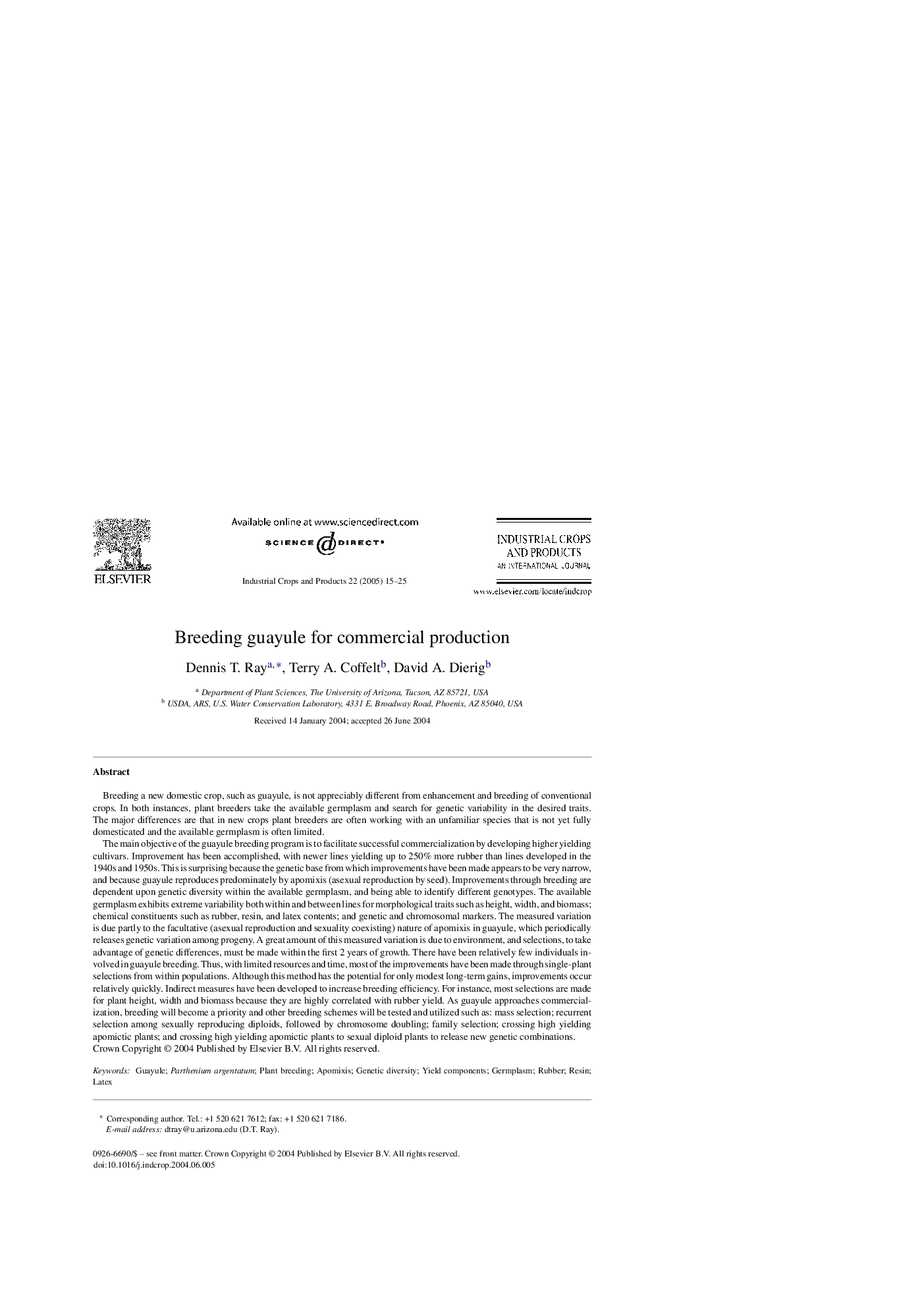| کد مقاله | کد نشریه | سال انتشار | مقاله انگلیسی | نسخه تمام متن |
|---|---|---|---|---|
| 9474154 | 1322246 | 2005 | 11 صفحه PDF | دانلود رایگان |
عنوان انگلیسی مقاله ISI
Breeding guayule for commercial production
دانلود مقاله + سفارش ترجمه
دانلود مقاله ISI انگلیسی
رایگان برای ایرانیان
کلمات کلیدی
موضوعات مرتبط
علوم زیستی و بیوفناوری
علوم کشاورزی و بیولوژیک
علوم زراعت و اصلاح نباتات
پیش نمایش صفحه اول مقاله

چکیده انگلیسی
The main objective of the guayule breeding program is to facilitate successful commercialization by developing higher yielding cultivars. Improvement has been accomplished, with newer lines yielding up to 250% more rubber than lines developed in the 1940s and 1950s. This is surprising because the genetic base from which improvements have been made appears to be very narrow, and because guayule reproduces predominately by apomixis (asexual reproduction by seed). Improvements through breeding are dependent upon genetic diversity within the available germplasm, and being able to identify different genotypes. The available germplasm exhibits extreme variability both within and between lines for morphological traits such as height, width, and biomass; chemical constituents such as rubber, resin, and latex contents; and genetic and chromosomal markers. The measured variation is due partly to the facultative (asexual reproduction and sexuality coexisting) nature of apomixis in guayule, which periodically releases genetic variation among progeny. A great amount of this measured variation is due to environment, and selections, to take advantage of genetic differences, must be made within the first 2 years of growth. There have been relatively few individuals involved in guayule breeding. Thus, with limited resources and time, most of the improvements have been made through single-plant selections from within populations. Although this method has the potential for only modest long-term gains, improvements occur relatively quickly. Indirect measures have been developed to increase breeding efficiency. For instance, most selections are made for plant height, width and biomass because they are highly correlated with rubber yield. As guayule approaches commercialization, breeding will become a priority and other breeding schemes will be tested and utilized such as: mass selection; recurrent selection among sexually reproducing diploids, followed by chromosome doubling; family selection; crossing high yielding apomictic plants; and crossing high yielding apomictic plants to sexual diploid plants to release new genetic combinations.
ناشر
Database: Elsevier - ScienceDirect (ساینس دایرکت)
Journal: Industrial Crops and Products - Volume 22, Issue 1, July 2005, Pages 15-25
Journal: Industrial Crops and Products - Volume 22, Issue 1, July 2005, Pages 15-25
نویسندگان
Dennis T. Ray, Terry A. Coffelt, David A. Dierig,